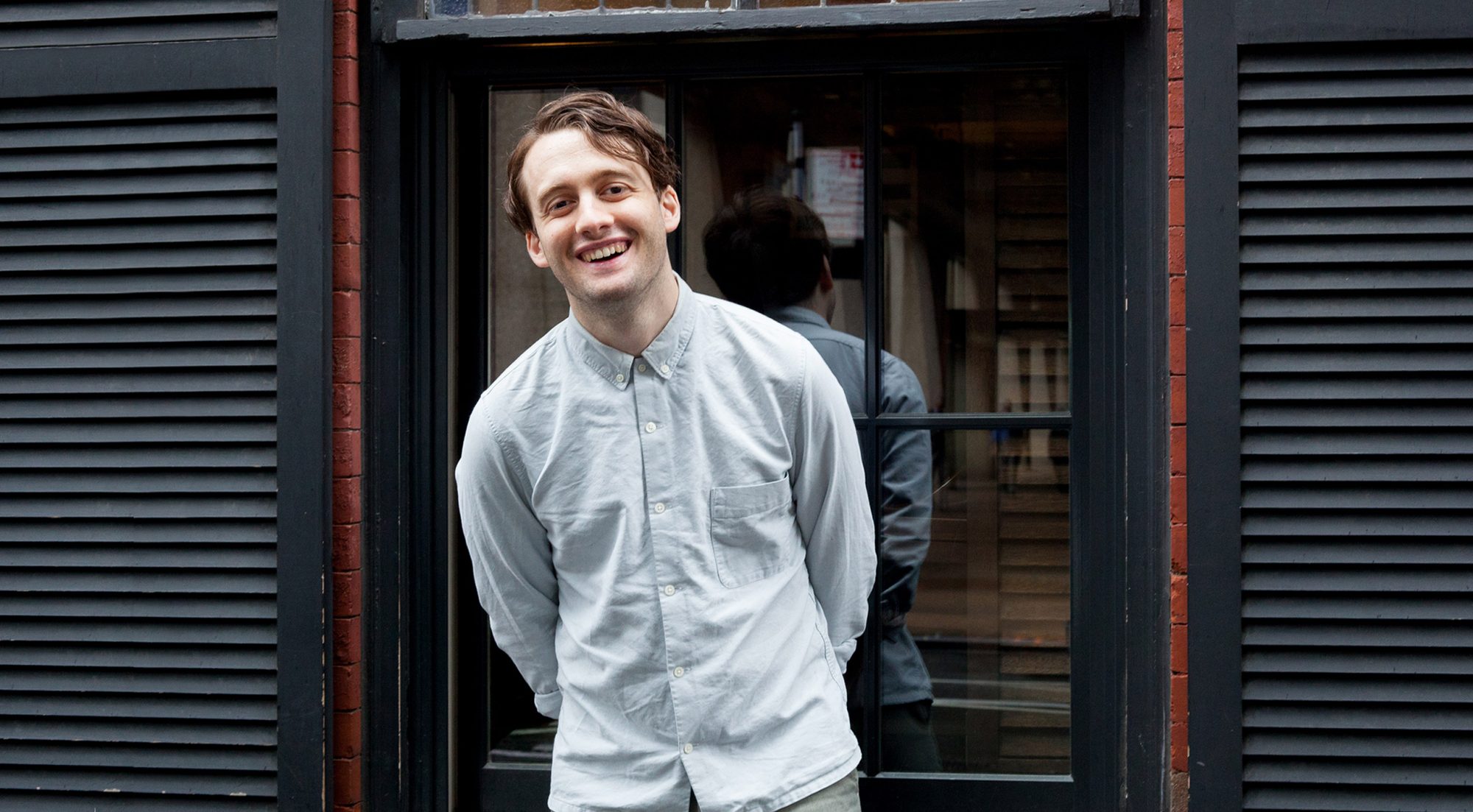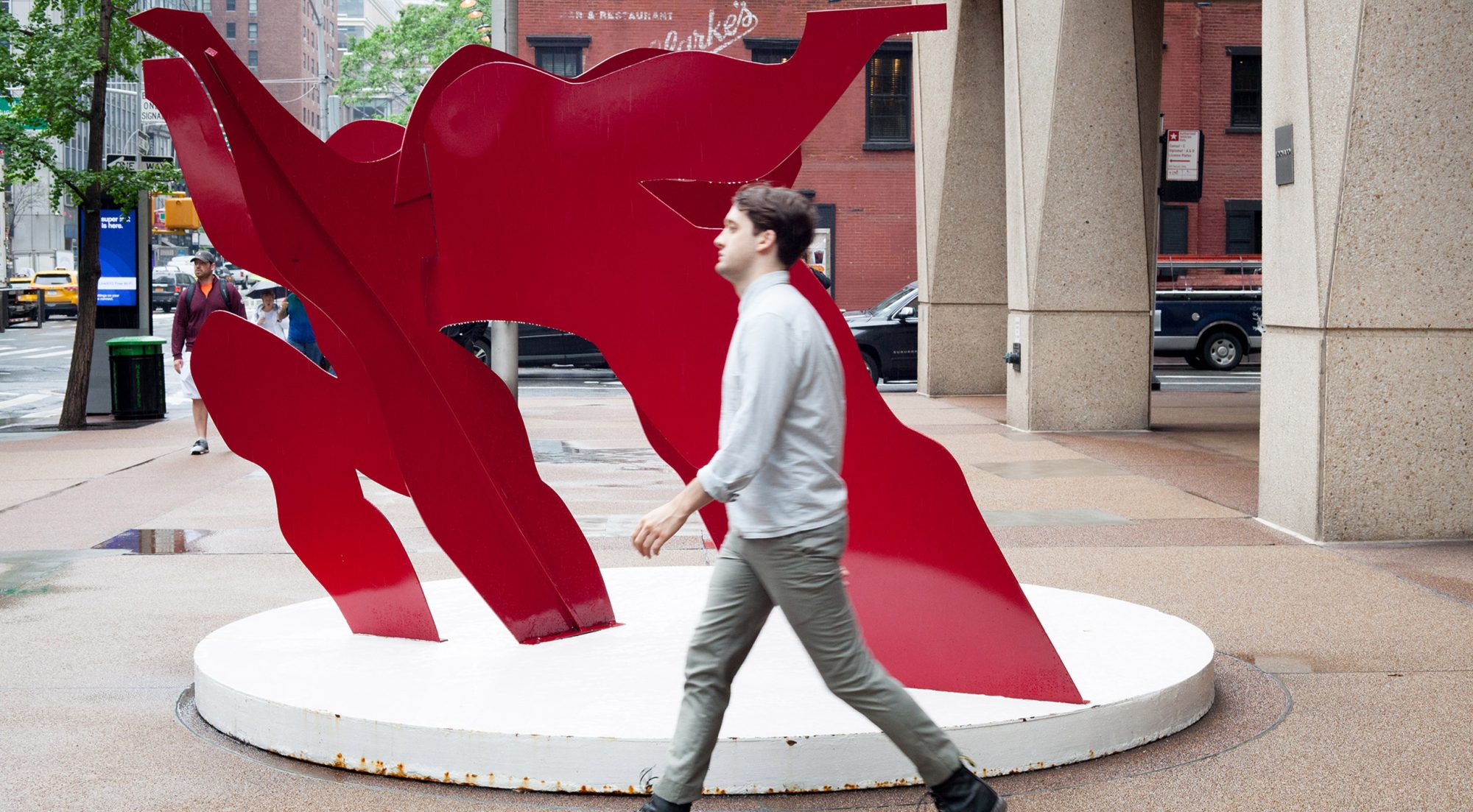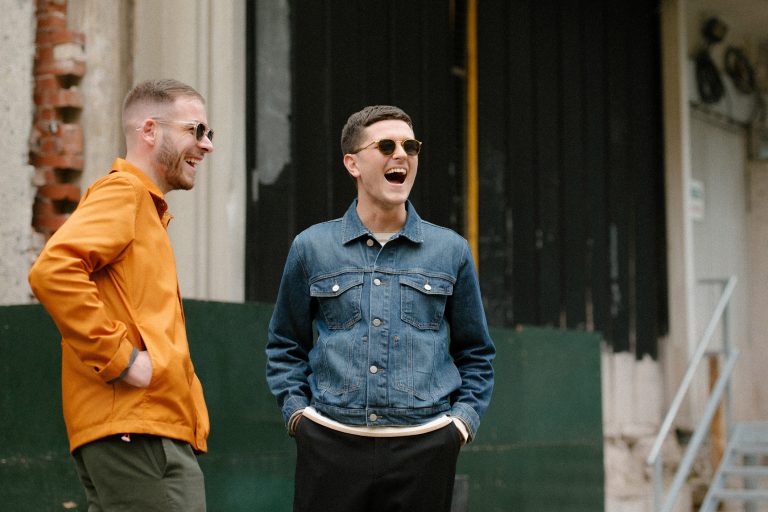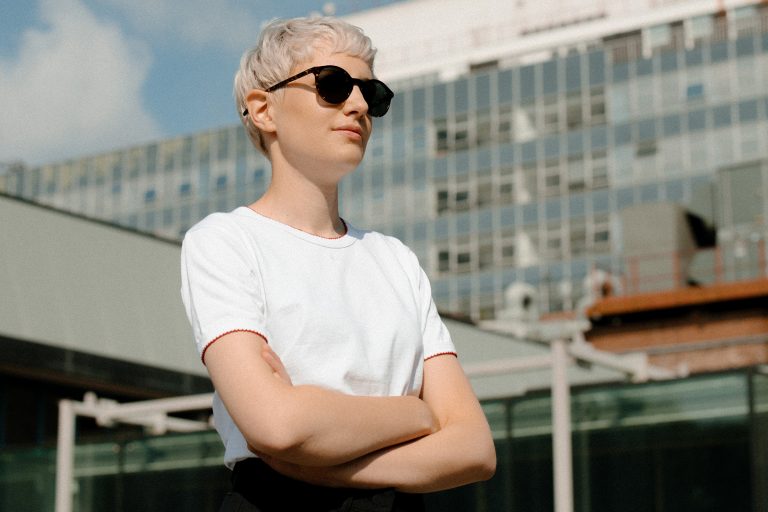
The House That Jack Built
We talk about creative process with self-confessed 'obsessive', New York City-based filmmaker Jack Turits and discover why big isn't necessarily better
Words by ALEC DUDSON
Photography by Edith Young
Why would you make something without first interrogating the process? That’s a question of paramount importance to filmmaker Jack Turits and indeed, as soon as we start to discuss his work, he offers up his “obsession with process” as a caveat to the conversation set to follow. “There’s no one way to do things, so the first question that you should be asking yourself on a new project is ‘how do I want to approach this?’” he exclaims. It’s a point that might seem trivial on first read, but when was the last time that you really, truly considered the manner in which you set out to attack a new idea? Ten years on from his directorial debut, the New Jersey native keeps one value consistent, that the process is entirely dependent on the goal.
It’s a philosophy that helps Jack to pivot easily across the different types of projects that make up his stellar portfolio, a body of work which he likes to separate into ‘fact’ and ‘fiction’. ‘Personal work’ is not a term that he’s particularly enamoured with it turns out, but the enchanting characteristics that underpin his independent, creative projects are also present in his commercial work, so I’m certainly not inclined to argue. Regardless of the scale, budget or nature of the project, it’s vital for Jack to plan and manage his autonomy, so that he can be as unencumbered as possible throughout the shoot. It’s hard being agile in filmmaking, such is the grand scale that things typically operate on. Shooting in New York — where Jack now resides — can be particularly challenging. Logistical realities always have the potential to disrupt a workflow, so wherever possible, Jack likes to scale down rather than up on things like the number of trucks hired for a project. He’s been in the game long enough to appreciate just how delays and hitches on a production or organisational level can impact the creative process and with it the spirit of the camp. “Filmmaking goes up and down, it’s not just what mood the director is in, it’s what mood the PA is in” he opines, “obviously someone has to make the final decision, but I truly believe that everyone is playing an equal, essential role.”


Big is not necessarily better it would seem, a grander scale means more moving parts and more variables, which become exponentially harder to control. The goal on set is to create some kind of ‘intimacy’ Jack explains, likening the ideal creative state to the simple dynamic between a painter and their canvas. “How do you make a film as direct an art form as possible?” he asks rhetorically, revealing that typically he first strives to keep as many people away from the camera as possible. It’s a challenge at the best of times, particularly on a commercial shoot where there’s clients and agency representatives to add into the mix, but he sometimes has the opportunity to break away from the main body of the production. Skirting off with his director of photography and producer, Jack is able to capture some of that much needed intimacy. There’s a craft to this as well of course, a well run production is still able to function effectively independent of Jack and his core team, but knowing when an approach like that is feasible, is all part of the learning curve.
It’s a learning curve that started during the final months of high school when an 18 year old Jack successfully applied to his second internship in New York City. His first was in a post house, but this was a whole new ball game. Jack was about to be taken in by a prominent production company in the United States and it was an opportunity that he was determined to extract maximum value from. “That was a real school for me” he reflects, “I used every resource at my disposal during that period to learn.” Working with people who were at the highest level of their respective crafts certainly rubbed off on the ambitious youth and for Jack, it’s largely a matter of application once you’re in that environment. You have to take ownership of the situation and be open to the experience. Now in a position where people come through on his productions as interns and juniors, Jack can attest to how easy it is to spot those who are committed to those who aren’t. “I see a lot who are sort of into it, but are there as a requirement for their studies”, those are invariably the ones who get the least out of their time on set and who, crucially leave without building these crucial relationships.
That’s an unthinkable outcome for Jack, who doesn’t hold back at all from explaining just how vital those connections have been since that first exposure to the professional environment. “The relationships I made in those early days have been the most important fuel for my career. I kid you not. Still to this day, those friends continue to give me my greatest opportunities”. Jack’s is not an unusual tale in that respect, it’s highly likely that those decade-long relationships will continue to open doors for him professionally for many more years to come.


Where his path does differ from many though, is that university didn’t play a part in his route into industry. Jack had already applied to university and been accepted by the time he was on his internship and as such started the first year, but from the minute he walked in, he knew it wasn’t going to work. Already working in the industry through his internship, the course was like going back to basics. If the whole point of the programme was to make him industry ready and he already was, continuing for the sake of it looked set to be a waste of time and money. Typically for Jack though, he didn’t let that experience pass without giving it fair a chance and made some close friends during that brief spell who he still works and collaborates with to this day. The internship wasn’t the only reason that he was ahead of the curve though. “I’d been making movies since I was a kid and when I was still in high school, I spent a year and a half making a short film with some friends” he reflects. It was a project that had taught him many of the skills that were new to his university classmates. “It took that long because we were trying to perfect it, whatever version of perfection that was, so if something didn’t work, we’d go and reshoot it the next weekend and make it work. It wasn’t my first film but the first one that felt like the real thing.”
Transitioning from that short film, to his internship and then into the professional world was still a demanding process for the precocious auteur. It was a journey that some of his colleagues played vital roles in, through their support and mentorship. “It’s always important to be able to have someone to turn to” says Jack who remains on the lookout for mentors, while finding time to mentor others. He’s happy to admit that at times, filmmaking can be a lonely business, “whether it’s because you’re writing and are physically isolated, or because you’re on set and the final decision comes down to you”. Seeking advice from someone who has been in your situation is a key sounding board and always of value, but Jack is keen to reveal the other side of the coin. “There are no gods when it comes to this. Nobody except you really has the answer. You take other things into account, but ultimately it has to be from you, it’s an expression of you.”
It essentially boils down to instinct for Jack. In the moment, when a creative decision needs to be made, “people have to remember to follow what they think is correct”. Taking ownership of that responsibility is a huge part of being a filmmaker and I get the sense that it’s a reason why process is also so important to him. Understanding the rhyme and reason behind all of the plans and decisions in the lead up to a directorial call must help to alleviate the pressure. As with so many things in life, it’s testament to the power of preparation and research.


When dealing with nuance and subtlety of filmmaking, each creative decision is open to critique and requires justification. Indeed, that’s one of the reasons why Jack usually prefers to shoot outside of New York, a city that he feels is over filmed and carries a good deal of baggage with it. “If you base a character here, that immediately implies something. My film ‘Have Had’ was originally written for New York, but that wasn’t working, so we moved it to a suburban setting, where I grew up in New Jersey”. By changing the backdrop, the audience’s perception of the character completely shifts, many of those preconceptions about the ‘kind of person’ that they are falls away and Jack is able to create the dynamic he aspires to, where “the audience should always be questioning”. Often, by being in New York, he feels, “you’ve already given them an answer”.
Living in a major city doesn’t mean it has to be your source of inspiration. The pace and density of New York actually often seems to represent the opposite to the kind of films that Jack makes. Up until the age of 17, he travelled solely in the US, finding endless fascination in the idiosyncrasies of each new city he explored. Since his directorial debut, those horizons have broadened with projects taking him as far and wide as Tokyo, Paris and Cape Town, the latter being the stand out example due to the “entirely new visual landscape” it conjured. While many modern cities border on being homogeneous, those that retain a palpable difference or those that are small enough to preserve their unique character, palette and atmosphere remain the most inspiring to Jack. “Sometimes though, not being in a place, it just being part of your imagination, can be more inspirational than the place itself” he muses. It makes sense that someone whose films are so engaging, is most comfortable when given the freedom to explore ideas unencumbered. Jack’s philosophy should serve as a reminder to us all that cutting out the noise of the world around us, is a vitally important part of the process, a process that we should constantly be critiquing.

You can catch Jack at 180 Creative Camp this summer where he’ll be leading a group project, inviting participants to go on a journey of creating a story together. Taking place on the 1st to 8th of July in Abrantes, Portugal, the 180 Creative Camp is a brilliant project that we’ve been involved in for a couple of years now. It’s an experience that brings together young creative people from around the world, for a shared adventure of self-reflection, discovery and collaboration. Pick up your tickets here. Once you’ve done that, be sure to take a look at Jack’s website. This feature was written by our editor-in-chief, Alec who you can follow on Twitter here. Jack was photographed in New York City by Edith Young, a brilliant young photographer who is currently part of the Man Repeller team (swoon). You can follow her on her ‘gram right here.









